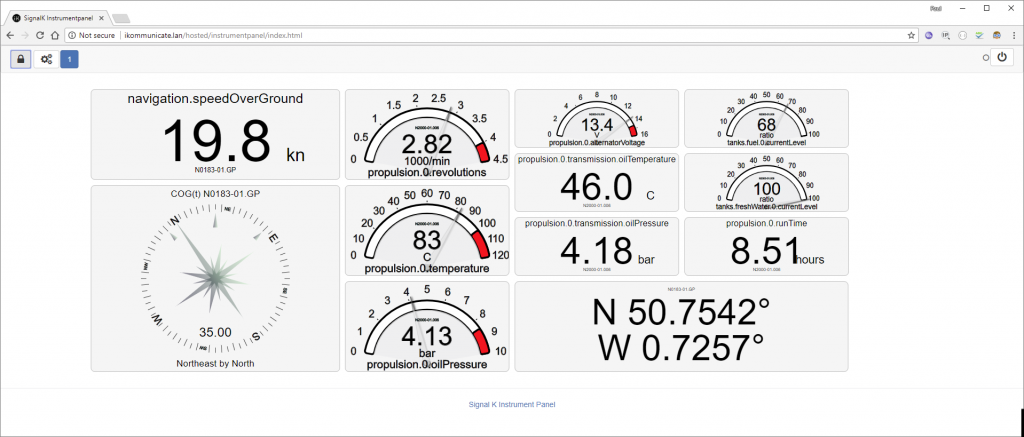
With many new marine engines now having integrated Engine Management Units outputting NMEA2000 or J1939 data, it is easy to forget that the vast majority of inboard marine engines have no digital engine monitoring, just the traditional analogue engine gauges.
With your boat’s engine probably being the most expensive and complex piece of equipment onboard, engine monitoring is understandably high on most boat owner’s priority list. Good news then when UK manufacturer Actisense released their EMU-1 engine gateway that could connect up to your engine’s analogue senders and create NMEA2000 digital data for display on compatible Multi-Function Displays (MFDs) or PCs.
Now Digital Yacht’s iKommunicate gateway can take the EMU-1 engine data and display it on an app for your Apple/Android device or even as a web app in your browser. Together the EMU-1 and iKommunicate make engine monitoring on older engines a real possibility, without having to spend lots of money on an expensive MFD.
Straight out of the box, the Signal K Instrument Panel App that we include on the iKommunicate SD Card, can be used to display the engine data from the EMU-1, as shown below.
Alternatively you can use our free OutboardView App for Android devices (see screen shot below) or for Apple iOS devices either NMEA Remote from Zapf Software or WilhelmSK from Scott Bender will both display engine data from the EMU-1 and iKommunicate.
Installation is best performed by an experienced marine electronics dealer/installer and will require the engine’s wiring diagram or a knowledge of marine engines, but it is not beyond anyone with a technical/engineering background.
The EMU-1 should be installed close to the engine, using the same supply voltage feed that goes to the engine senders. Once connection to the engine senders is made, a single NMEA2000 drop cable links the EMU-1 to the NMEA2000 backbone. iKommunicate, with its integral drop cable, can join the backbone at any suitable location throughout the boat and will need to be wired to the boat’s wireless network using a normal RJ45 Ethernet cable.
Once iKommunicate transfers the engine data to the boat’s wireless network, any wireless device can display it, either using one of the aforementioned apps or its internet browser.
The EMU-1 has six analogue inputs, two tacho inputs and four alarm inputs, so can be used for single or dual engine installations and iKommunicate will automatically detect the number of engines and apply the suitable data conversions.









